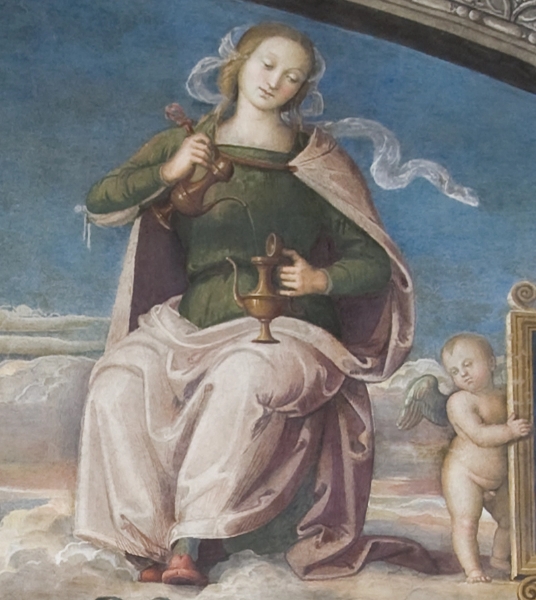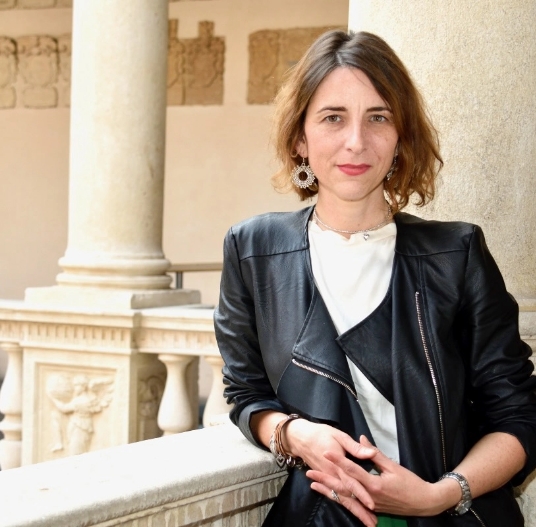IUSTITIA Mercatoria.
Places, Spaces and Iconographies of Mercantile Justice in Europe (11th-17th Centuries) – IUSTITIAM







THE PROJECT IN A NUTSHELL
IUSTITIAM is an interdisciplinary and comparative project funded by the Italian Ministry of Education and Research (MUR) under the FARE Ricerca in Italia scheme (Framework per l’Attuazione ed il Rafforzamento delle Eccellenze in Italia), Prot. R20XAEXX5X, which will last 5 years (5 December 2022 – 4 December 2027).
The project stems from the awareness of the need to reconstruct the unity of the human and social sciences in order to break the isolation of legal studies. The subject of the project is mercantile justice in Europe between the Middle Ages and the Early Modern Age, which will be analyzed from the unprecedented point of view of the study of the spaces chosen by merchants to administer their justice. According to Ernst Cassirer, man is not only an animal rationale, as Aristotle claimed, but, given his symbolic nature, he is rather an animal symbolicum. Access to and progress towards the symbolic, which is something uniquely human, creates the possibility of phenomena such as ethics and law.
The main objective of IUSTITIAM is therefore to treat law, and in this case commercial law, not as a dogmatic discipline but as a multiform phenomenon and therefore (first and foremost) as an experience.

In the most classical of definitions, starting with Ulpian’s suum cuique tribuere, the semantic scope of law overlaps with that of justice, i.e. its ultimate goal. Law, often perceived as an alien element to society because considered complex and almost unknowable, barricaded behind impenetrable technicalities, has been made tangible, and therefore knowable, through art, first and foremost fine arts and architecture. If the existence of a body of customary laws uniformly adopted across medieval and early modern Europe (lex mercatoria) is still debated by scholars, the mechanisms of merchants’ justice are equally controversial, since the procedures applied were by definition brief and informal.
IUSTITIAM proposes a never attempted approach to the issue of mercantile justice. By means of the study of places (courts, lodges, fondaci/kontors), spaces (squares) and iconographies (paintings, frescoes and sculptures), the project intends to link legal history, art history and history of architecture in order to analyze the “visual language” that merchants used over the centuries in the main European trade centers to express their idea of law and justice.
THINKING OUTSIDE THE BOX OF LEGAL DOGMATISM:
Consistency, affinity and synergy with the ERC CoG MICOLL
IUSTITIAM is in perfect synergy with the ERC project MICOLL, as they share an extremely interdisciplinary approach to the history of commercial law. Both projects cover the same timeframe: from the “Commercial Revolution” of the 11th century to the 16th century epochal changes in the dynamics of commercial law that had direct consequences up to the 17th century.
However, the geographical coverage is different. IUSTITIAM, in fact, focusing on the study of monuments and iconographic sources, and being much more independent from archival research, can cover a wider area, potentially the whole European continent.
In synthesis: MICOLL aims at analyzing law merchant through the tools of historical linguistics. IUSTITIAM aims at analyzing mercantile justice through the language of visual arts. Their common goal is to understand the phenomenon of commercial law in its complexity.
This non-dogmatic but rather critical approach to law, which is characteristic of disciplines such as history, philosophy, sociology and anthropology of law (and today, we might add, of the studies of “Law and the Humanities”), also has a high pedagogical value.


THE STATE-OF-THE-ART AND HOW IUSTITIAM INNOVATES IT

The state-of-the-art shows that there is a widespread interest in the relations between law, justice, space, and representation, but also that so far no one has thought to direct this interest towards the places of mercantile justice. IUSTITIAM wants to frame the analysis of the places and iconographies of mercantile justice in the field of study known as “Law and the Humanities”. Thanks to the large financial resources of the merchant guilds, such places were sometimes imagined or decorated by great artists, as in the case of Perugino for the Collegio del Cambio in Perugia.

This kind of analysis not only has an aesthetic value but also a socio-historical one, for at least two reasons:
a) Because merchants have always distinguished themselves for having proposed a “bottom-up” approach to law, according to the idea of a self-managed justice;
b) Because an investigation on mercantile justice cannot be limited to courts, but must necessarily include all common spaces used by merchants to “project” their idea of law and justice, such as lodges, fondacos, seats of corporations, sometimes squares.
If we look at the bibliography on the places of mercantile justice, we cannot but notice that the majority of the existing contributions are written by art historians. Therefore, the symbolic and persuasive value of the images is not duly placed in the historical-legal context for which they were conceived.
IUSTITIAM proposes the first systematic legal-historical study of the places of mercantile justice. The analysis will focus on places that can still be visited and admired today.
OBJECTIVES AND METHODOLOGY
IUSTITIAM intends to create a “reasoned map” of the places dedicated to mercantile justice of which tangible evidence remains, over a sufficiently long period of time (11th-17th cent.) and in a sufficiently extended geographical area (Europe) to allow a wide-ranging reflection on the representation and perception of justice over time.
The project is based on the following methodological cores:
"Law and the Humanities" methodology
Comparative structure
Interdisciplinary approach
The project proposes a comparative approach based on a long chronology and several case studies. The comparative structure will be put into practice through the examination of specific buildings/spaces, starting from Italy and Germany, i.e. the geographical areas taken into consideration by the ERC CoG MICOLL, e.g.: the Fondaco dei Tedeschi in Venice, the Loggia della Mercanzia in Genoa, the town hall of Lüneburg, the Marienkirche in Lübeck. Thanks to the fact that the project will last five years, it will certainly be possible to extend the survey to other important trading centers such as the Lonja de la Seda in Valencia, the Grote Markt in Antwerp, the Lonja de Mar in Brema, and the Palazzi della Mercanzia in Florence, Bologna and Perugia. Not to mention places deputed in general to the administration of justice (including mercantile justice), such as the Palazzo della Ragione in Padua. The selection criterion will be to identify the places with the richest architectural and iconographic tradition.
Valencia
Antwerp
Brema
Florence
Bologna
Perugia
TO SUM UP
Today more than ever, the isolation of the various branches of knowledge is being challenged in favour of an interdisciplinary approach that does not separate phenomena from their context. For centuries, law was studied as an integral part of the so-called artes sermocinales. This intellectual unity was gradually broken, starting with the 12th cent. Bolognese glossators and ending with the 19th cent. Pandectists, whose ideas still influence the academia. Law, however, feeds and is fed by the world around it.
IUSTITIAM intends to oppose the idea of a self-sufficient and self-referential law. To do so, it will use the language that has always been used to communicate to a vast and not necessarily technically prepared audience: the language of images.
Team
Postdoc

Funded under: FARE Ricerca in Italia scheme (Framework per l’Attrazione ed il Rafforzamento delle Eccellenze per la Ricerca in Italia)
P.I.: Stefania Gialdroni (mail: stefania.gialdroni@unipd.it)
Project number: R20XAEXX5X
Start date: 5 December 2022
End date: 4 December 2027






